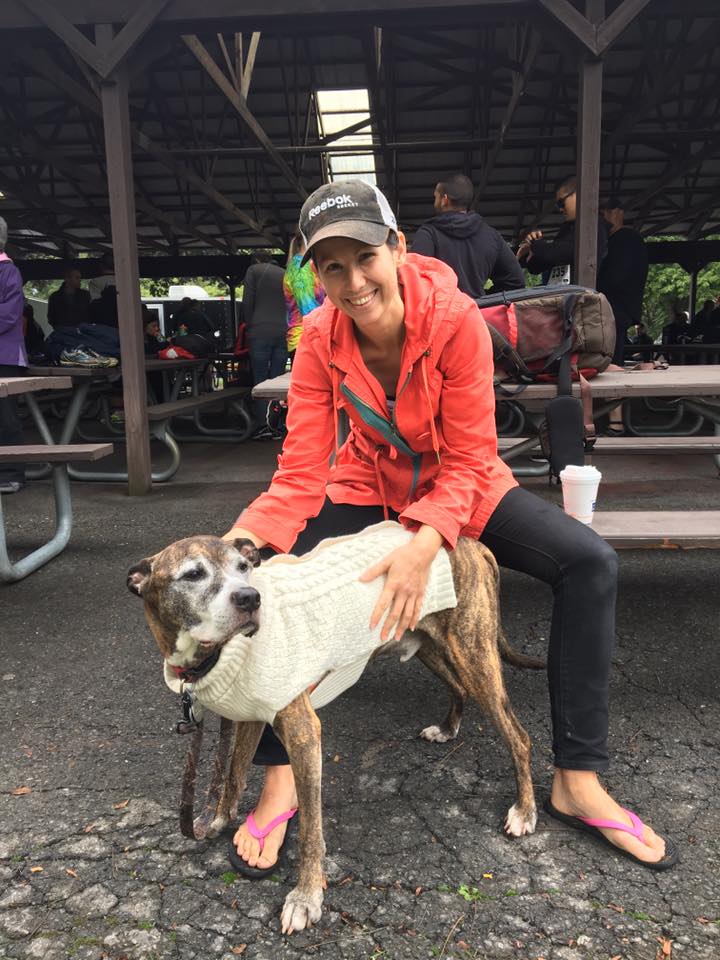
Welcome to the blog! This week, we’re talking about 5 behavioral changes in dogs that can sometimes be connected to an underlying medical issue. We also discuss how to prepare for and navigate veterinary visits to help your veterinarian provide you and your pup with optimal care.
Many times, a change in our dog’s behavior seems to indicate a need for additional training or behavior modification. But in certain scenarios, a visit with your veterinarian may be the best first step.
Happy Reading,

5 Sneaky Signs You Should Take Your Dog to the Veterinarian
(and, how to get the most out of your vet appointment)
The connection between our dogs’ physical health and their behavior cannot be overstated. When your dog is in good health, they are better able to cope with stressors, exhibit impulse control, and enjoy daily activities
When your dog is experiencing a health issue—whether it’s itchy skin, an upset tummy, achy bones, a cracked tooth, or a urinary tract infection—their body experiences some level of stress and discomfort. In turn, their mood, cognitive resources, and tolerance for stress are all negative impacted.
The problem: it can often be really tricky to recognize when our dogs aren’t feeling 100%, as the changes in their behavior aren’t always ones we associate with illness or discomfort.

5 Common Behavior Changes that Warrant a Vet Visit
Below are 5 common behavior changes clients bring to our training teams, often with the assumption their dogs will require some sort of training or behavior modification to resolve the issue.
Our first recommendation in all 5 of these situations is usually to schedule a visit with your veterinarian to explore potential underlying medical issues that may be causing or exacerbating the behavior change (assuming the change in behavior can’t be easily linked to a recent event or environmental or routine change).
Why? If an underlying medical condition is causing or exacerbating the change in your dog’s behavior, leaving that condition untreated means any training and behavior efforts we try to implement to address the issue will be far less effective, or altogether unsuccessful.

This one can creep up on you without you noticing. First, your dog acts distracted and ignores you when you ask them to hop up into the car, but with an extra prompt or two, they do still hop in. Over time, they get more and more reluctant. You notice they also sometimes balk at the top of the stairs. Or maybe they’re choosing to lay on their bed on the floor, whereas their absolute favorite spot in the world used to be next to you on the sofa.
It’s easy to interpret the lack of responsiveness in these situations as disobedience, and as a sign that you need to revisit your training foundations. Often, it can be a sign of increased physical discomfort and/or physical limitations caused by anything from injury, to arthritis, to disease or structural issues.
Your veterinarian can help you sort through potential causes. Once you have answers (and treatment, if needed) from your vet, a trainer can help with appropriate exercises to help your dog regain confidence around certain obstacles or objects.

This can also feel like your dog is being “disobedient” – especially if they’ve always been enthusiastic and cooperative about you suiting them out to go for a walk.
Speaking from personal experience, we’ve had clients in this situation find out their dogs were struggling with everything from ear infections to cracked teeth to tick borne diseases. In nearly all cases, the sudden reluctance to put on walking gear and go on walks was the only obvious, observable sign that something was wrong.

A recent study showed a notable connection between noise sensitivity and musculoskeletal pain in dogs.
If your dog was previously unfazed by most sounds, and they’re now showing notable stress at loud or sudden noises (e.g., ducking their head, erupting into barking, shaking/trembling, getting up and leaving the room, or panting rapidly), it might be a sign that they’re experiencing increased physical discomfort.

While there are a lot of non-medical reasons for a dog to suddenly begin displaying destructive behaviors, destructive chewing and/or the ingestion of non-food items can also be a sign of gastrointestinal issues, dental issues, or diseases.

This usually isn’t something folks bring to us as a stand-alone issue, but it is something that is sometimes mentioned in passing while we’re discussing their dog’s behavior more broadly.
As an owner, it can be easy to write this off as a simple change in preferences, or as your dog maturing. But if your dog really enjoyed gnawing on bully sticks, antlers, or other long-lasting chews, and the frequency of their chewing has significantly declined over the past couple of weeks or months, it may be a sign of a dental issue or something else that makes chewing/gnawing uncomfortable.
While we’ve highlighted 5 common behavior changes, keep in mind that any sudden, negative change in your dog’s behavior warrants reaching out to your veterinarian, especially if you can’t link the change to a specific event, routine change or environment change.

Get the Most Out of Your Vet Visit
So, you’ve noticed a sudden behavior change and you’ve called your veterinarian to make an appointment. That’s amazing! In order for your veterinarian to provide you and your dog with optimal care, it’s important to go into your appointment with a clear understanding of the information you want to share, as well as what you’re looking to get out of the visit.
As skilled and knowledgable as your veterinarian is, they don’t have the benefit of observing your dog’s behavior over the span of hours, days, months, and even years, as you do. Instead, they have only the small snapshots of time they spend with your dog during your 15-20 minute appointments.
Further, your vet’s observations during those appointments are often complicated by the fact that many (most?) dogs don’t behave like their typical selves while visiting the veterinarian. Some dogs are extra stoic and hide all but the most severe pain & discomfort; many have extra adrenaline and stress hormones coursing through their system that alter their responses.
Help Your Veterinarian Provide Optimal Care
If you are visiting your veterinarian to discuss a recent change in your dog’s behavior, there are some simple things you can do before and during your appointment to help your veterinarian tap into their wealth of specialized knowledge to provide you and your pup with optimal care.
Recommendation #1:
Be prepared to share with your veterinarian your observations about what has changed about your dog’s behavior.
When sharing observations, be as specific as possible. Focus on contrasting your dog’s previous/typical behavior with their current behavior so your vet can more clearly understand how far their behavior has deviated from their normal baseline.
For example, rather than saying, “he seems low energy lately,” try sharing something like this:
“He has always been super enthusiastic to go out on walks. He LOVES playing fetch, and he has always followed me around the house to keep an eye on whatever I’m doing. He’s always been an “up for anything” dog. Within the past few weeks, he only gets up from his bed may 50% of the time when I pick up his leash and ask if he wants to go for a walk (this used to always make him really excited). When we’re outside and I throw the ball, he’ll often start to go after it but then stop, or he just watches it be thrown and looks at me. He still has moments when he runs and plays and gets excited, but not nearly as much. During the day he’s just hanging out on his bed instead of following me around – he often doesn’t even get up to greet me at the door like he used to.”
It can be helpful to make notes of your observations in advance, so you can easily read them off to your vet vs. trying to recall every important detail during the stress of the appointment.
Recommendation #2:
Tell your veterinarian what you are hoping to get out of the appointment.
Different clients have different expectations and desires going into a veterinary visit. Take the guess work out of it for your vet by sharing your objectives for the appointment. Then, let them share with you what feels achievable for this particular visit, and what doesn’t.
Here is an example of verbiage to try:
“I’ve been trying to identify any events or routine changes that might have contributed, but I can’t think of anything notable. I’m also exploring potential behavioral causes and routine adjustments with my trainer/behavior consultant.
During today’s appointment, I would like to:
- Hear more from you about potential medical issues that can contribute to the types of behavioral changes I’ve described
- Learn about any diagnostics you might recommend that can help us determine what, if anything, might be going on from a medical perspective
- Discuss whether there are any treatment/intervention options you can recommend we try immediately to help alleviate symptoms, based on what you observe and what I’ve shared.”

NEED TRAINING OR BEHAVIOR SUPPORT?
Check out the resources below!

Check out Instinct’s award-winning podcast, Dogs Unknown (fka DogLab), hosted by Instinct Co-Founders Sarah Fraser (me!) and Brian Burton.

Join one of our free, live training & behavior seminars via Zoom!
Hosted by Instinct behavior consultants, these seminars include a 1 hr presentation plus live Q&A session. Open to all!

Sign up for the Nature-Driven Nurture Foundations course in our Online School. Learn our groundbreaking canine behavioral health framework that teaches you how to optimize your dog’s training & care based on their unique, individual Nature. This self-paced course includes:
- Access to private Alumni Facebook group
- Twice-monthly Zoom Q&As with Instinct co-founders
Or, contact your local Instinct for fully customized training & behavior support with certified, veterinarian-recommended trainers and behavior consultants.



